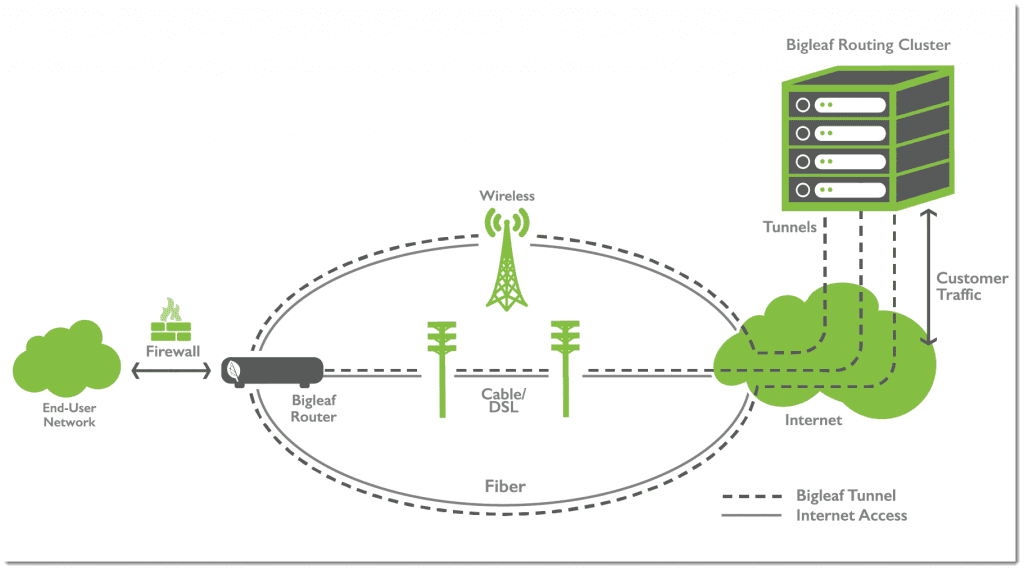This website uses cookies so that we can provide you with the best user experience possible. Cookie information is stored in your browser and performs functions such as recognising you when you return to our website and helping our team to understand which sections of the website you find most interesting and useful.
SD-WAN: Simplifying Critical Connectivity

Software Defined Wide Area Networking (SD-WAN) simplifies management and operation of a Wide Area Network (WAN) by separating the network hardware from the mechanism used to control traffic flow. SD-WAN provides flexibility in the design and operation of a resilient network to ensure connection to critical resources.
SD-WAN has a broad range of technical solutions and use cases. It is important to understand what types of traffic or connectivity you are trying to optimize before partnering with a specific vendor. Some SD-WAN vendors specialize in optimizing connectivity for Cloud-based services. This specific form of optimization resonates with many small businesses now that the Internet has become a critical business resource with advent of Cloud offerings including Office 365 and infrastructure hosting datacenters such as Microsoft Azure.
Redundancy is achieved by combining two or more circuits together. The SD-WAN vendor uses these circuits to form a tunnel between the business operators’ site and the vendor’s datacenter. The customers equipment is configured with static IP addresses that do not change and are independent of the Internet services that are being used. The SD-WAN management platform then monitors the key performance metrics for each circuit and continuously adjusts how traffic flows across them to optimize performance.
The vendors monitoring data is used to not only optimize the traffic flows, but it is used to provide detailed reporting. This reporting can be used to illustrate the effectiveness of the SD-WAN service to adapt to changing traffic demands or circuit availability and performance issues.

SD-WAN Benefits
The use of SD-WAN provides an opportunity to reduce the monthly recurring cost of more expensive telecommunication services, such as MPLS, used to connect sites while maintaining performance expectations. It is possible for an SD-WAN solution, composing of lower-cost consumer Internet services, to outperform more expensive dedicated circuits due to the agility and automatic tuning the vendors’ solution offers.
An overview video of a leading SD-WAN solution can be viewed here.
A few of the key features of SD-WAN are:
- Fault tolerant WAN or Internet operation. Provides seamless transition during circuit issues since traffic flows are uninterrupted by the failure or degradation of one of the aggregated connections.
- Simplifies the network. Eliminates additional equipment and configurations required to achieve redundancy by abstracting the configuration away from the perimeter. The use of “same IP failover” eliminates the need to implement additional failover mechanisms, such as firewall-level failover or Failover DNS, since the IP addresses configured on the perimeter do not change.
- Optimizes the performance of the network. Provides for the use of both circuits for load balancing and increasing aggregate throughput. Leverages traffic shaping and Quality of Service (QoS) adaptation of critical traffic to improve end-user experiences. May provide a direct peering directly to leading Cloud providers, such as Microsoft Azure and AWS, to increase performance and security.
- Simplifies change management. Internet connections can be added or removed from the SD-WAN router without changing the IP addressing the customer uses. This reduces the amount of changes required when switching ISPs delivering a higher degree of continuity with Internet-connected services.
Have any questions about using SD-WAN? Feel free to contact us at any time.
This publication contains general information only and Sikich is not, by means of this publication, rendering accounting, business, financial, investment, legal, tax, or any other professional advice or services. This publication is not a substitute for such professional advice or services, nor should you use it as a basis for any decision, action or omission that may affect you or your business. Before making any decision, taking any action or omitting an action that may affect you or your business, you should consult a qualified professional advisor. In addition, this publication may contain certain content generated by an artificial intelligence (AI) language model. You acknowledge that Sikich shall not be responsible for any loss sustained by you or any person who relies on this publication.




